If you are a backyard chicken enthusiast like me, you may need to add the Maran chicken to your flock. You’ll have much to enjoy rearing this beautiful, standout breed.
The Maran breed is popular for its productivity, gentle temperament, and beauty. Additionally, its egg-laying ability and meat production are excellent.
In addition, the eggs are colorful and of decent size. This makes it a favorite among people who dislike white eggs.
Before adopting this distinctive companion to your flock, explore its characteristics and raising practices in this post.
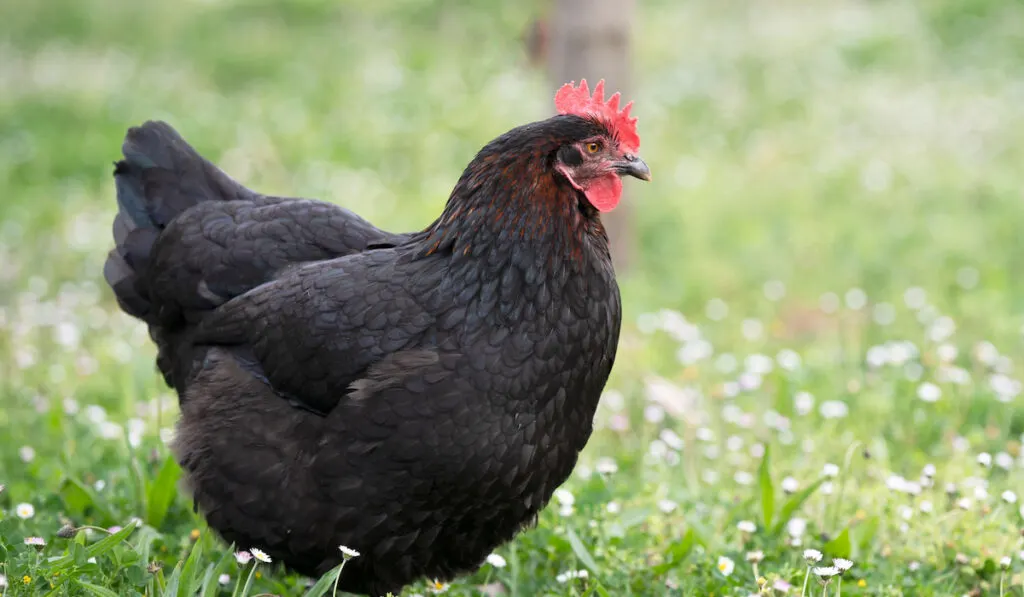
Table of Contents
History
The Maran chicken originated from France’s Marans region (read ‘Maran’). The area lies in Southwest Paris.
This breed has evolved since the 13th century. Marans is a port town where trade ships bought the local chicken breeds and brought them to America.
The Maran emerged when breeders crossed the local breeds with the ones from France.
We have different varieties of the Maran today. They include the Cuckoo, which is the most common. Others are:
- Silver Cuckoo
- Gold Cuckoo
- Brown red (black copper)
- Wheaten
- Splash
- Silver black
- Columbian
The breed is a dual purpose with commendable egg and meat production.
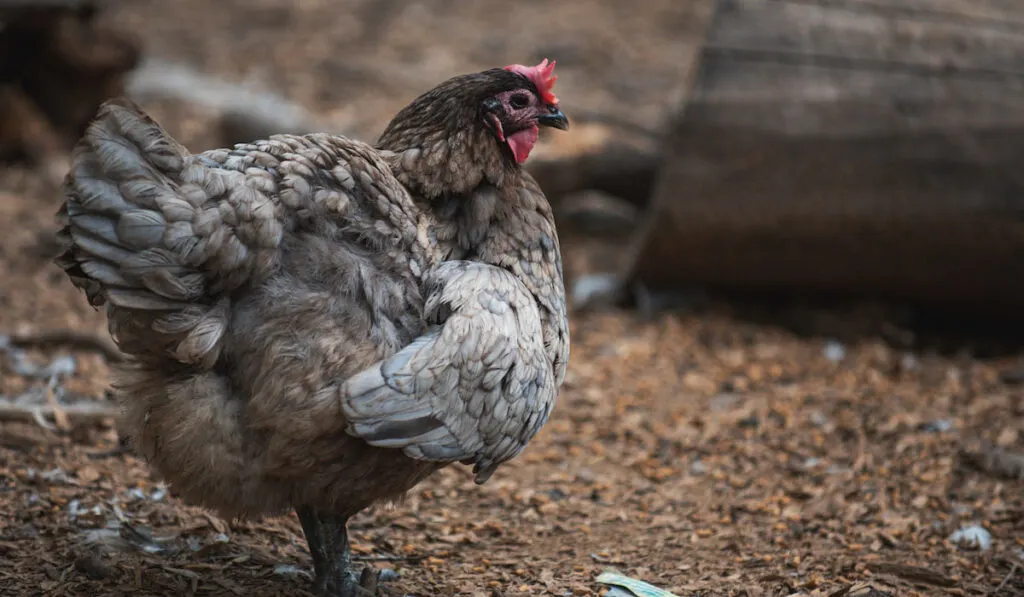
Breed Standard and Appearance
Maran chicken is a medium-sized fowl that comes in different colors. It has lightly feathered legs and bright clear eyes. Its skin is white, with yellow toes on each leg.
Some varieties of the Maran chicken, such as Cuckoo, have pink legs.
The Maran is muscular with plenty of muscles on their legs and breasts. The variety has a single comb, red wattles, and red earlobes.
They have a moderately tight plumage with a smooth texture.
The American Poultry Association (APA) has recognized black, black copper, wheaten, and white varieties since 2010.
Size
Maran chickens are medium-sized and muscular. A mature rooster is 22 inches tall and weighs 8 pounds.
Their female counterparts are 15-16 inches tall and weigh 6.5 pounds.
Bantam Marans are smaller and weigh less. A rooster is 28 oz. while the hens weigh 24 oz.
The breed’s medium body size makes it suitable for meat production. Although their maturity rate is lower than other breeds, they produce flavorful meat and beautiful eggs.
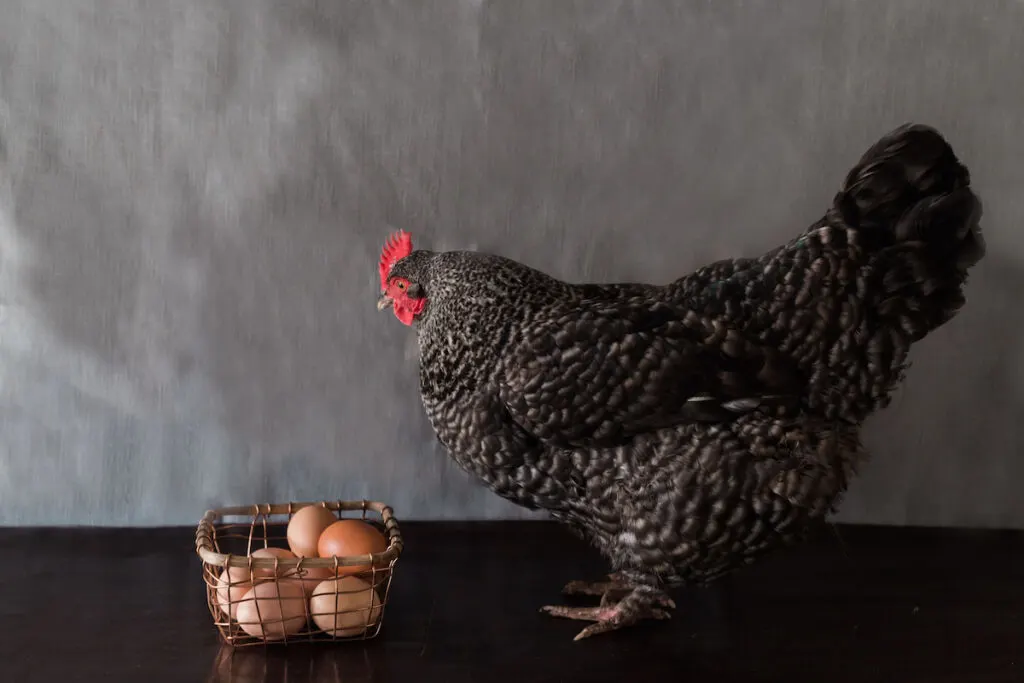
Egg Color and Size
Maran pullets start laying eggs at 32 weeks. Their maturity rate is slower than other breeds which lay eggs at 20-22 weeks.
However, their eggs are larger and more beautiful with thick shells.
Their egg color is deep russet brown. The brown shade is darkest within the first six weeks. As the hen matures, the egg size increases while the brown color fades.
A pullet’s egg weighs 2.3 oz, while a mature hen weighs about 2.65-2.83 oz. The eggs are spherical, although some are round.
If your Maran hen is healthy, you can collect 3-4 eggs per week, or 150-200 yearly.
Noise Level
Maran chickens are not noisy. Apart from the occasional crowing of roosters and cackling of hens, their noise level is average.
This characteristic makes them ideal for your backyard, although they also do well in free-range.
Uses
The Maran is a dual-purpose breed. You can raise them for their colorful eggs or flavorful meat. Besides, their eggs are unique, so you can keep them for ornamental value.
This breed’s distinctive and aesthetic features make it popular for its products and beauty.
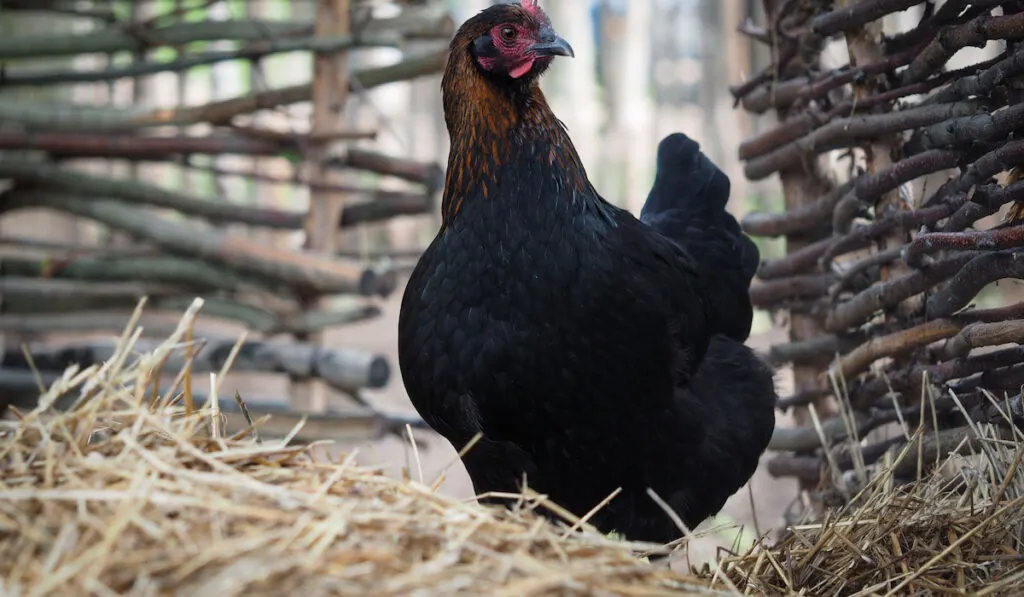
Temperament
Maran chicken breed varieties exhibit different behavior and characteristics. They cultivate behavior when you handle them and become friendlier with time.
If you feed them regularly, they may follow you around. However, they can also resist you, especially when you are new to them.
In a friendly environment, Maran chickens are relaxed and easygoing. They interact well with other breeds, although roosters can be aggressive.
In addition, the breed is clean, as they rarely soil their coops. This feature makes them suitable for small and large-scale rearing.
You can raise them in urban areas or the countryside because of the tidiness and low noise level.
Lifespan
Marans are among the chicken breeds with the longest lifespan. They can live for 7+ years under diligent care.
The Marans’ resistance to harsh weather is commendable. And unlike other breeds which thrive in warm conditions, Marans do well in low temperatures.
Their hardy nature and simple diet (chicken feed and water) enable them to live longer. Moreover, they mature slowly.
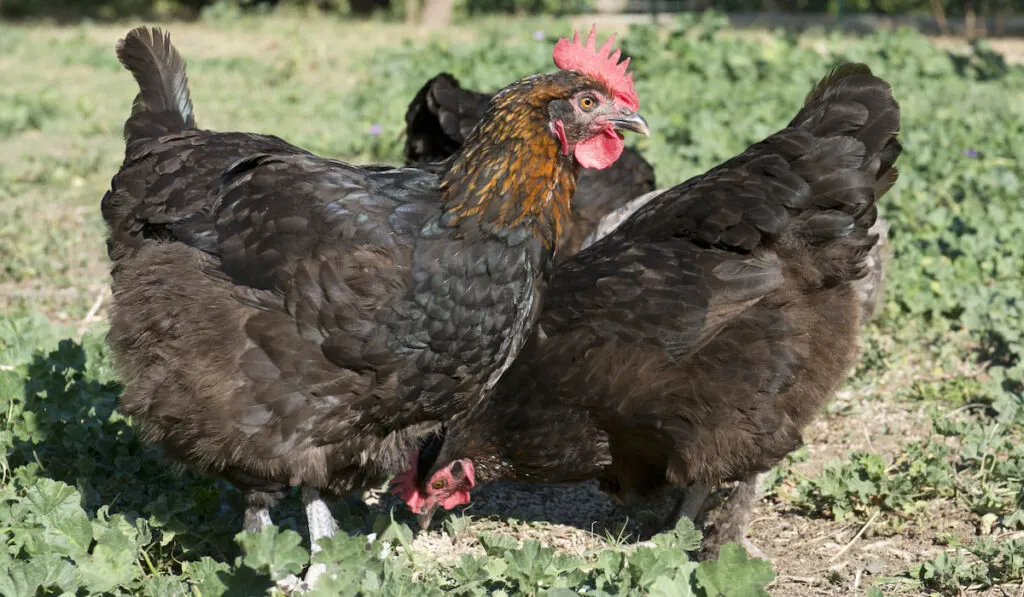
Hatching and Raising
Hatching
Maran eggs are difficult to hatch because of their thick waterproof shells.
The coat of brown coloration meant to protect the inner egg hinders oxygen penetration. Lack of sufficient oxygen in the air sac exposes the developing embryo to a low oxygen supply.
Furthermore, the fully developed chick finds it hard to escape the shell.
The darkest eggs are hardest to hatch because they overstay in the oviduct, leading to embryo death.
However, the incubation period for Maran eggs is 22 days. Due to the big chick size, they take longer to escape the shell.
Note that Maran hens rarely go broody. Whereas a few may show signs of broodiness, most never do.
This makes them poor hatchers, leaving you with the artificial incubation method.
Housing
Marans are large birds, therefore they need big coops to accommodate their size. A full-grown chicken requires four square feet of space.
You should also add a roosting perch inside the coop and nesting boxes.
Since the birds are hardly flighty, a roosting area two feet off the ground is ideal. Ensure you use about 1.5-inch thick poles for optimal comfort.
The nesting boxes should be large enough to accommodate mature hens.
Birds are prone to parasite attacks, and Marans are no exception. Therefore, clean their coops regularly using clean water and disinfectant.
Frequent inspection of the bedding in the nesting boxes helps with mites and pest control.
Feeding
Maran chickens are simple to feed. They thrive on chicken feed and clean water.
Start with 20-24% protein chick crumble for young chicks. The high protein content is essential for growth until the chicks are 16 weeks old.
After 16 weeks, you can reduce the protein content to 16% and complement it with 16% layer feed. This helps in egg development.
When chickens starts molting, they need about 20% protein content to help in bodybuilding and feather growth.
Calcium is essential for shell development. Therefore, add a separate container of calcium for hens. Crushed oyster shells are a good source of calcium.
Another container of grit comes in handy if your fowls are confined. But if they free range, they can get their own grit while foraging.
Ensure clean water is always available for your flock, and if they contaminate it, replace it promptly to avoid diarrhea.
Maran chickens are good foragers. You should allow them to loiter in your yard and forage.
This will supplement the chicken feed with nutrients from healthy minerals and organic matter from the soil.
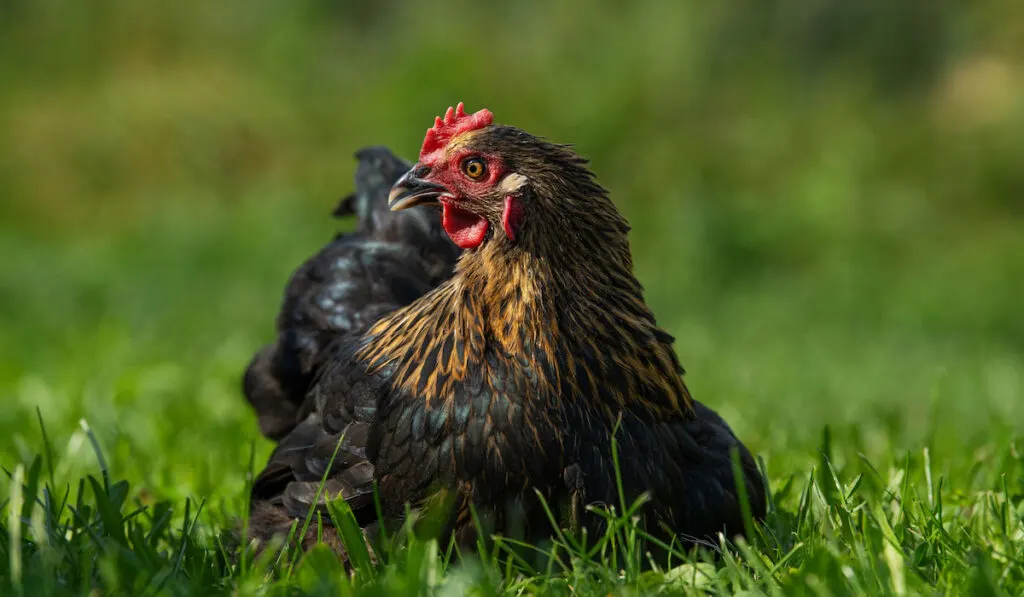
Health Issues
The Maran is known for its hardy nature and rarely gets sick. It thrives at low temperatures and has a good tolerance for harsh weather conditions.
However, the breed is sensitive to unclean environments.
Lice and mite attacks are a common problem in poultry rearing, including the Maran chicken. Thanks to various pesticides in the market, you can easily eradicate them.
Worm attack is another health problem in Maran chicken. To manage this, administer dewormers regularly to your birds.
Common Diseases
Frostbite on the comb is a common problem among Maran chickens, especially when temperatures are very low.
The condition is, however, manageable if you install a sweeter heater on the roof of the coop.
Although the heater hanging above the roosting bars does not heat the coop, it warms the birds underneath.
Before the start of fall, ensure you have sweeter heaters to protect your Marans’ combs.
Cold Tolerance
This breed is winter-hardy, making it good in colder climates. Although they tolerate cold well, their productivity drops during winter months.
This explains why they lay few to no eggs during winter.
Heat Tolerance
The breed’s heat tolerance is great. You only need to ensure their coop has good ventilation and cool fresh air.
If you allow them to forage or free range, provide a shade to shield them against the hot sun.
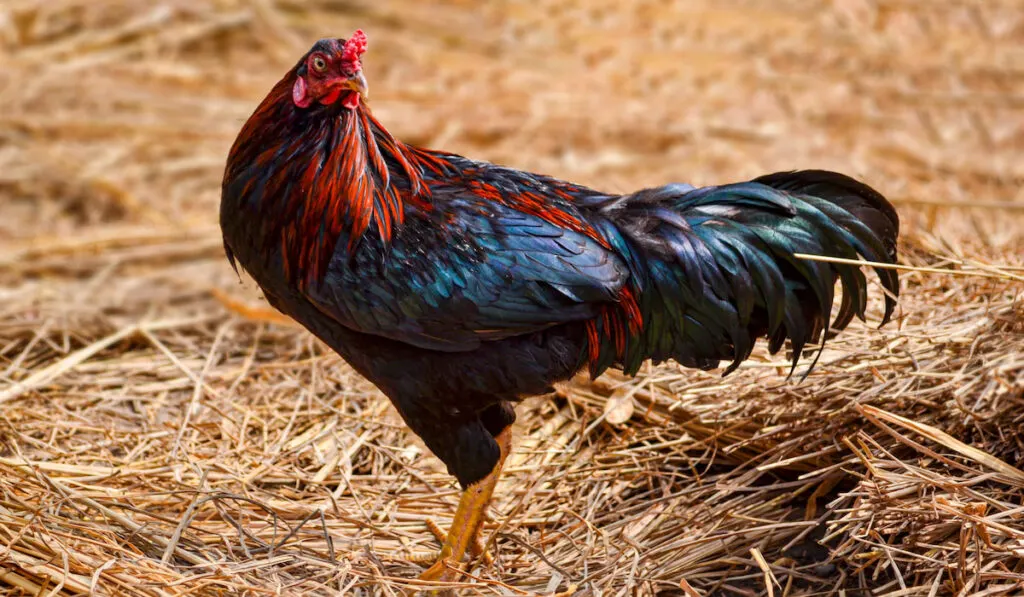
Where to Buy Maran Chickens and Cost?
Different farms in the United States hatch and raise Maran chickens. You can buy them directly from farms or order from online stores.
The cost varies with size, sex, and variety. A Black Copper Maran, for example, costs $8-10.
Final Thoughts
Raising Maran chickens is a great venture for commercial and subsistence purposes. You can rear them in rural and urban areas because they are gentle and not noisy.
However, because different varieties have different behaviors, you should scrutinize the characteristics of the birds before purchasing them and ensure you have the right breed.
Resources
- https://backyardpoultry.iamcountryside.com/chickens-101/marans-chicken-april-breed-of-the-month/
- https://backyardpoultry.iamcountryside.com/chickens-101/the-history-and-future-of-marans-chickens/
- https://maranschickenclubusa.com/
- https://chickenexperts.com/blogs/chickens/the-marans-chicken-a-colored-egg-masterclass-and-breed-guide
- https://www.thefeatherbrain.com/blog/marans-chickens#13
- https://petkeen.com/marans-chicken/
- https://cluckin.net/incubating-and-hatching-marans-eggs.html
- https://zpoultry.com/mystic-marans/#Health_Issues
- https://flockjourney.com/breeds/colored-egg-layers/marans/
- https://www.riversystems.it/en/chicken-
